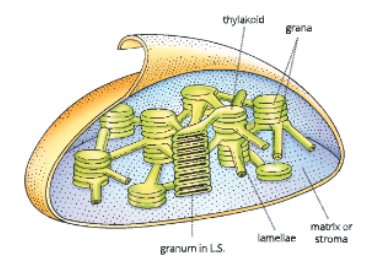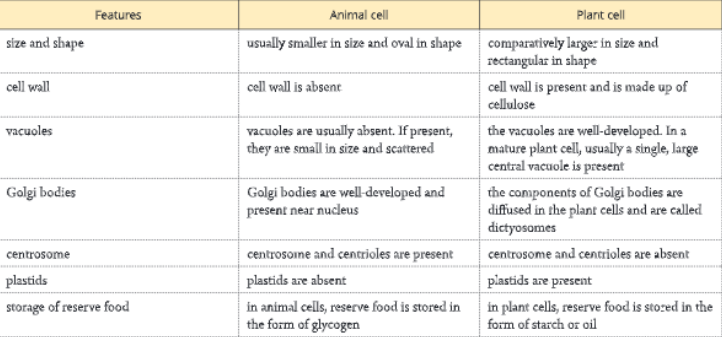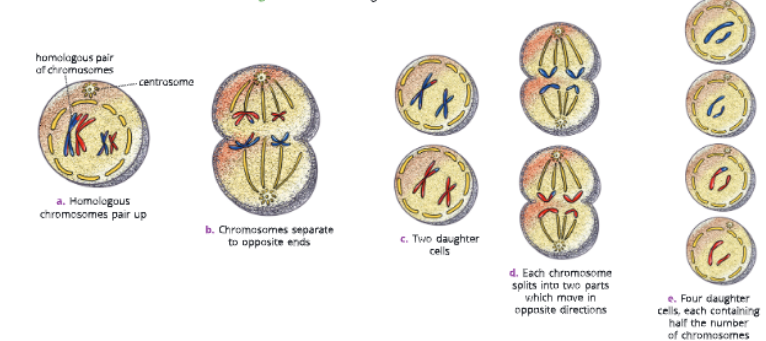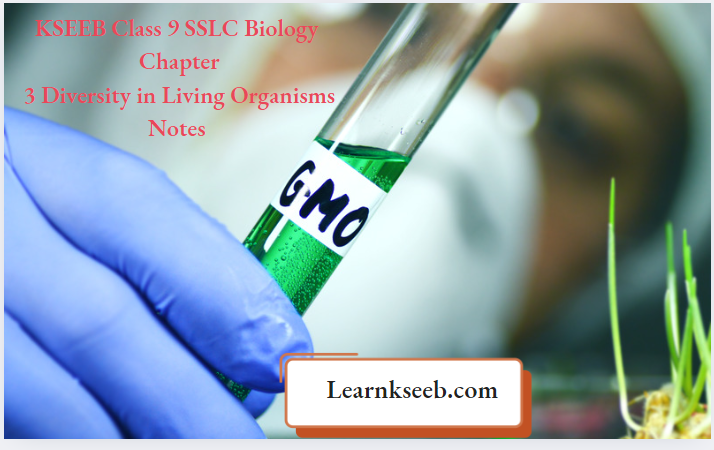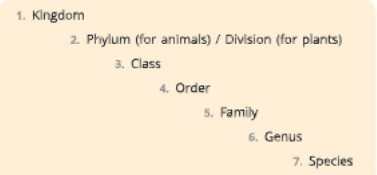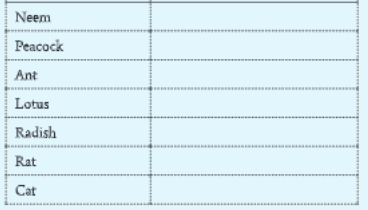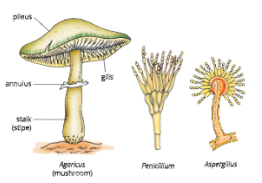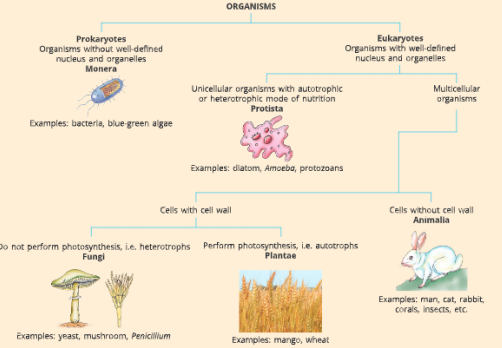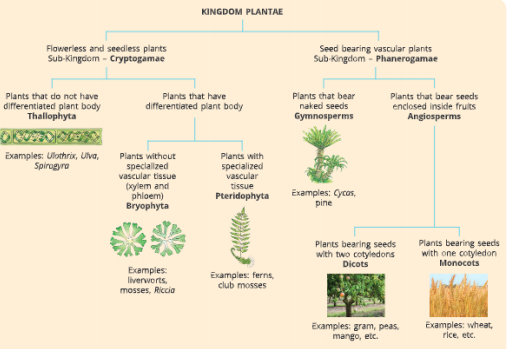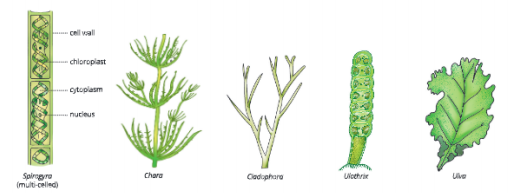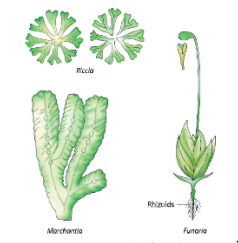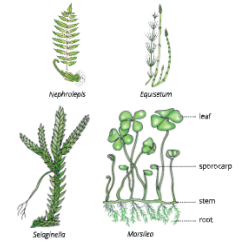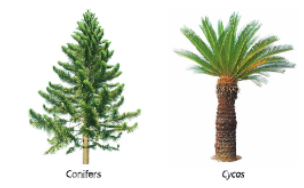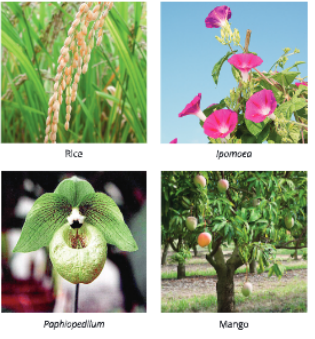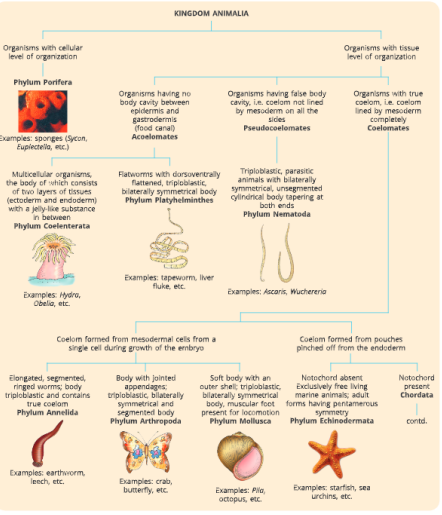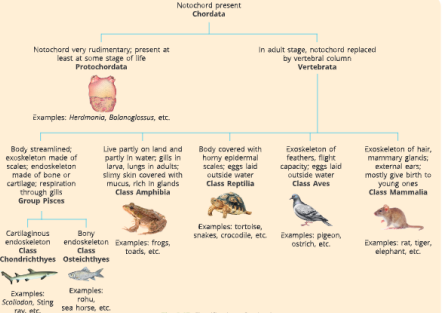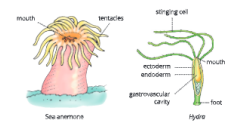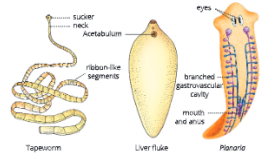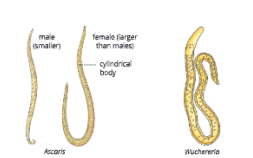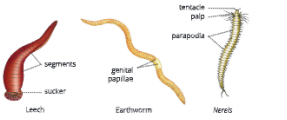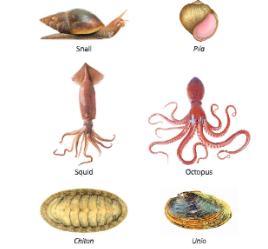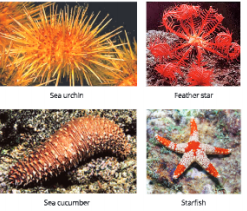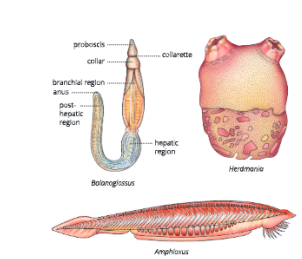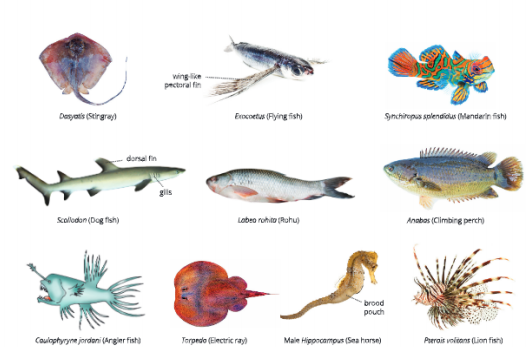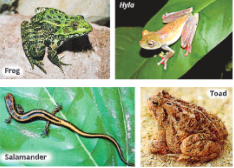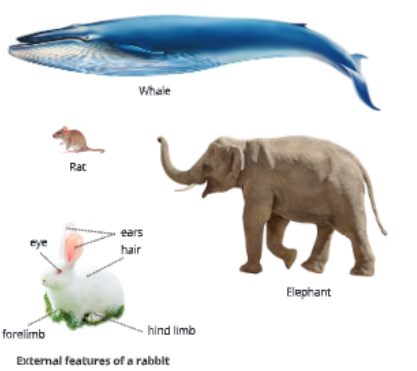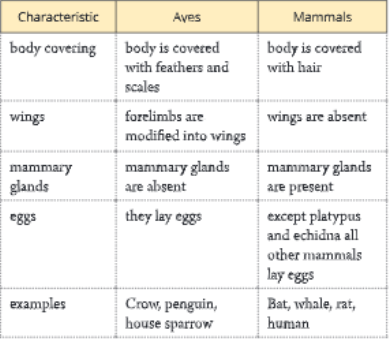KSEEB Class 9 SSLC Biology Chapter 6 Improvement In Food Resources Notes Learning Objectives
- After completing this chapter, you will be able to:
- recognize the necessity for regularly improving food production from agriculture and animal husbandry and need for sustaining them.
- describe various methods of crop variety improvement such as hybridization and Introduction of genes into the crop;
- explain various methods of crop production management;
- list various methods of irrigating crop fields;
- describe rainwater harvesting technique:
- describe various cropping patterns such as mixed cropping, Intercropping, crop rotation, etc.;
- explain various means of crop protection management;
- differentiate between manure and fertilizers and list their various types;
- define animal husbandry and its importance;
- describe the methods of fish production, poultry farming and bee-keeping.
animals and plants need food for their survival is the ultimate source of energy for all living beings. Different types of food crops are found in India .
- Food provides us with many nutrients like proteins, carbohydrates, fats, vitamins, minerals as well as water.
- Food protects our body against diseases.
- It is required for growth, development and repair of worn-out tissues of our body.
Since plants can manufacture their own food by photosynthesis, they are the ultimate source of food on the earth. However, for human beings, both plants and animals are the major sources of food. Mostly we obtain food from agriculture and animal husbandry. Agriculture (Latin: ager means field, and cultura means cultivation) is the cultivation (growing) of food crops in the field for food requirements. On the other hand, rearing animals (livestock) to obtain milk, eggs and meat and their management are part of animal husbandry.

Reasons For Imorovements In Agriculture and Animal Husbandry
Why is it necessary to regularly improve the food production from agriculture and animal husbandry? Why are the current levels of food production not enough? A few thousand years ago, most of the humans on the earth probably obtained their food by gathering leaves, fruits or roots and hunting animals.
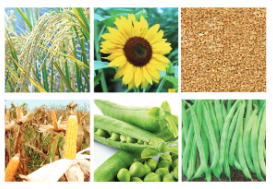
During that period, the human population was very low and there were enough food resources available in terms of animals, fruits, etc. However, if we see today, the scenario has totally changed and now India is a very populous country.
Currently, our population is more than one and a quarter billion people and is still growing. As population is increasing, the need for food requirement is also increasing. For this current population in India, we will need more than a quarter of a billion tonnes of foodgrains every year.
To get such a large quantity of foodgrains, we will need more land for farming. But, we know that the land for agriculture is limited and almost all available land is already extensively cultivated. Thus, there is not much scope to increase the area for farming and cultivation.
Hence, it is necessary to efficiently utilize the existing farming land and increase the efficiency of production of both crops and livestock. With new discoveries in science and technology and efforts in improving crop and livestock management, there has been some success in increasing food production. Our country has had two significant revolutions in agriculture and animal husbandry-green revolution and white revolution. Green revolution led to increased foodgrain (mainly wheat) production.
Likewise, white revolution led to better availability and more efficient use of milk in India. However, these revolutions caused over-exploitation of our natural resources. Due to more intensive use of land for crop production and subsequent loss of soil fertility due to over-exploitation of soil, land is becoming scarce, quantitatively as well as qualitatively. As a result, there are chances of damaging and destroying the balance of our natural resources.
By disturbing our natural resources, we will compromise with the productivity of agriculture. Therefore, there is a need for sustainable practices in agriculture and animal husbandry to increase food production without further depleting natural resources and disturbing the balance in nature. However, simply increasing food production cannot solve our problem of malnutrition and hunger. We know that India is largely an agriculture-based society as agriculture is one of the main sources of livelihood for majority of people in India.
Thus, it is necessary that the people engaged in agriculture get optimum returns from it in terms of income to buy food for combating the problem of hunger and malnutrition. For sustainable livelihood (healthy living), it is necessary to adopt sustainable agricultural practices such as mixed farming, intercropping, crop rotation, crop selection, integrated agriculture, etc.
Combining agriculture with poultry farming, fish culture, bee-keeping, livestock production, etc. is known as integrated agriculture. In this chapter, you will learn about different food crops, how they are cultivated and safely stored, animal husbandry and how to improve their production.
Improvement In Food Resources Chapter Summary Class 9
Imorovement In Crop Yields
Different types of crops
Crops can be divided into two categories based on their utilization -food crops and fodder crops.
Food crops
Food crops include those crops that we eat to obtain nutrients. There are many types of food crops such as cereals, pulses, oil seeds, etc. In addition, there are vegetables, fruits and spices.
Cereals: Wheat, rice, maize, millets, barley and sorghum are cereals which provide us with carbohydrates that meet the energy requirements of our body.

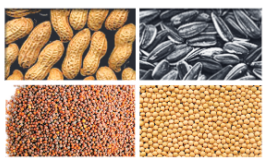
Pulses: Gram (chana), black gram (urad), pea (matar), green gram (moong), lentil (masoor), pigeon pea (arhar) are pulses and provide us with proteins. Oil seeds: Oil seeds include soyabean, groundnut, sesame (til), mustard, castor, sunflower and linseed.
Oil seeds provide us with oil which is a good source of necessary fats.
Vegetables, fruits and spices provide us with vitamins and minerals. In addition, they also provide us with small amounts of proteins, fats and carbohydrates.
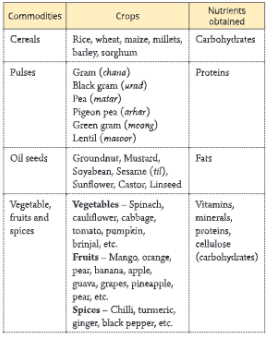
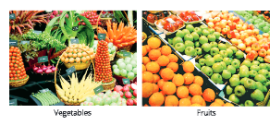
Fodder crops
Fodder crops are those crops which are raised as a food for the livestock. Fodder crops include berseem, oats or Sudan grass, etc.
Rabi Crops And Kharif Crops
For the growth and completion of their life cycle, different crops require different climatic conditions, temperature of the surroundings and duration of sunlight received, ie. photoperiod. Growth of plants and flowering depend on sunlight. Depending upon the season in which they are grown,
there are mainly two types of crops – rabi and kharif crops.
Rabi crops
The winter season is from November to April and is known as rabi season. Wheat, gram, peas, linseed and mustard are important rabi crops.
Kharif crops
The rainy season is from the month of June to October and is known as kharif season. The chief kharif crops are the millets, known as bajra and jowar, paddy, maize, cotton, green gram and black gram.
Activities For Improving Crop Yeild
If you compare the data of food production from 1952 to 2010, you will find that there has been an increase of 400 per cent (i.e. four times) in the production of foodgrains. However, the cultivable land area has increased by only 25 per cent during this period. How this increase in food production has been achieved? This increase in food production has been achieved by improving agricultural practices.
There are broadly three stages of farming:
- selection of seeds for planting,
- nurturing of crop plants, and
- protection of the growing crops and harvested crops from loss.
The various tasks performed by a farmer to produce a good crop are called agricultural tasks or agricultural practices. Agricultural practices require systematic planning and proper management at all stages of crop production, starting from the selection of seeds and preparation of soil to harvesting and storage of food. Adopting good farming practices and managing resources like soil and water efficiently are the pre-requisites for this.
The major activities for improving crop yields are given below. - Crop variety improvement
- Crop production management
- Crop protection management
Crop Variety Improvement
Need for crop variety improvement
A good variety of crop is one which gives better yield in minimum time, limited resources and optimum land utilization.
Improvement in variety means to develop varieties with desired characters such as higher yields, better qualities, resistance to diseases and pests, etc. It is mainly done by improving the genetic make-up of crop plants through plant breeding.
Plant breeding can be defined as the science of improving genetic make-up of plants in relation to their economic use. Varieties of plants can be selected by breeding plants for their various useful characteristics such as disease resistance, response to fertilizers, quality of product and high yield. Some commonly used plant breeding methods for improvement of crops/varieties are introduction of gene into the crop, hybridization, etc.
Hybridization
Hybridization is the process of crossing two genetically dissimilar (different) plants to obtain a progeny with the desired traits. This crossing may be:
- Intervarietal: Cross between two different varieties of the same plant species. This helps in producing high-yielding varieties.
- Interspecific: Cross between two different species of the same genus. This helps in producing plant varieties resistant to diseases.
- Intergeneric: Cross between different genera.
Introducing a gene In this technique, a gene that would provide the desired characteristics is introduced in the plant. As a result, genetically modified crops are produced.
Characteristics of a good plant variety
- The new varieties of crops should produce high yields under different climatic conditions found in different geographical areas.
- The seeds should be of good quality and all seeds should be of the same variety and germinate under same conditions.
- Varieties should be capable of growing in diverse climatic conditions since weather conditions are unpredictable. This is also because cultivation practices and crop yields are related to weather, soil quality and water availability.
- The new varieties should also be tolerant to high soil salinity.
KSEEB Class 9 Biology Important Questions Chapter 6
Objectives of crop variety improvement
Some objectives of crop variety improvement are asfollows:
- High yield: This is done to increase the productivity of the crop per acre. This can be brought about by developing high-yielding varieties by cross- breeding and hybridization.
- Improved quality: As human beings have become health conscious, they now stress on the quality of food with enhanced taste, nutrient value, etc. Quality considerations of crop products vary from crop to crop. For example, baking quality is important in wheat, protein quality in pulses, oil quality in oil seeds, and in fruits and vegetables, preserving quality is important.
- Resistance to undesirable biotic and abiotic stresses: New varieties developed as a result of varietal improvements should be resistant to biotic stresses like diseases, insects and other pests, and to abiotic stresses like drought, salinity, waterlogging, heat, cold and frost.
Change in maturity duration: The shorter duration of crops from sowing to harvesting is more economical for the farmer. Maturity period of some long duration crops can be reduced, and then these crops can be used along with short duration crops in mixed cropping or multiple cropping. This will also reduce the cost of crop production. Uniform maturity will also make the harvesting process easy and it reduces the losses during harvesting. Using short duration crops, farmers can grow multiple types of crops in a year/season. - Wider adaptability to new regions and climatic conditions: Improved varieties should have wider adaptability which would help in stabilizing the crop production under different regions and environmental conditions. Thus, single variety can be grown under different climatic conditions in different areas.
- Desired agronomic characteristics: For fodder plants, tallness, high tillering and intensive branching are desirable agronomic traits, whereas dwarfness is the desired agronomic trait for cereal crops so that less nutrients are consumed by these cereal crops. Therefore, developing varieties of desired agronomic characters helps in getting more productivity from the same crop plant grown in a limited land area.
- Varieties for saline soil: We must develop varieties which can grow equally well in saline soil and give normal returns. It will increase the production. The improved varieties of some important crops are given in Table 6.2.
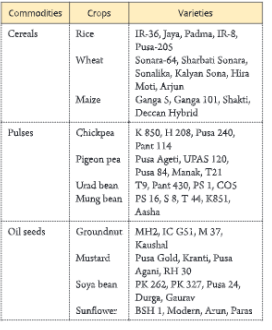
Crop Production Management
In India, like any other agriculture-based country, farming ranges from small to large farms. Different farming practices and agricultural technology are integral part of crop production management. There is direct correlation between economical condition of a farmer (input), his access to information and communication technology, and the yields he gets from farming. Thus, the cropping system and production practices depend upon farmers’ purchasing capacity.
Hence, there can be:
- no cost production practices,
- low cost production practices, and
- high cost production practices.
Crop production management includes the following components: - Crop nutrient management
- Irrigation
- Cropping patterns
CROP NUTRIENT MANAGEMENT
Plants need certain chemical elements for their growth, development and metabolic activities. These chemical elements are called plant nutrients. There are about 30 to 40 elements found in plants, but only 16 of these are essential for their better growth and development. Other elements found in plant body are called non- essential elements.
The 16 elements found essential for growth and development of plants are – 1. Carbon, 2. Hydrogen, 3. Oxygen, 4. Nitrogen, 5. Phosphorus, 6. Magnesium, 7. Calcium, 8. Sulphur, 9. Potassium, 10. Manganese, 11. Iron, 12. Copper, 13. Zinc, 14. Boron, 15. Molybdenum and 16. Chlorine.
All elements found in plants are derived from air, water and soil.
- Air: Carbon and oxygen
- Water: Hydrogen and oxygen
- Soil: Soil provides maximum number (13) of essential nutrients to the plant. The essential elements provided by soil are nitrogen, phosphorus, potassium, magnesium, sulphur, calcium, iron, manganese, boron, zinc, copper, molybdenum and chlorine.
Although the soil provides 13 of the 16 essential nutrients required by plants, they constitute only about 0.5 to 6% of the plant tissues. These 13 elements provided by the soil are classified into two categories
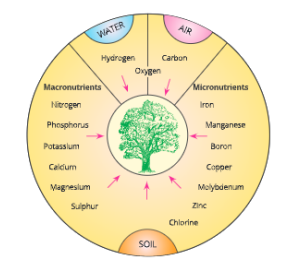
based on the quantity in which they are required by plants. These two categories are a. Macronutrients, and b. Micronutrients.
Macronutrients
Macronutrients are those elements which are utilized by plants in relatively large quantities. Out of the 13 soil nutrients, only six are macronutrients. These are nitrogen, phosphorus, potassium, calcium, magnesium and sulphur.
Micronutrients
Micronutrients are those elements which are required by plants in small quantities. Though required in small quantities, these nutrients are as essential for the growth and development of plants as the macronutrients. There are seven micronutrients required by plants. These are iron, manganese, boron, copper, molybdenum, zinc and chlorine.
The major differences between macronutrients and micronutrients are given in Table 6.3.
Deficiency of plant nutrients may affect the physiological processes in plants such as reproduction, growth and ability to fight against diseases. As a result, plants may show retarded growth, wilted leaves, low crop-yield, small seed kernel, increased susceptibility to diseases, etc. These nutrients can be added to the soil in the form of manure and fertilizers to get higher crop yield.

Manure And Fertilizers
Repeated cultivation of the same crops on the same agricultural land depletes the mineral nutrients and other useful contents of the soil. Due to this, the fertility of the soil is reduced, resulting in decreased crop production and lower economic yield. The fertility of an agricultural land can be enhanced by adding manure and fertilizers to the soil.
The necessary plant nutrients present in manure and fertilizers make the soil fertile. Nitrogen, phosphorus and potassium are the three most important elements for the healthy growth and development of crop plants, which can be supplemented in the soil through manure and fertilizer.
Manure
Manure is an organic substance obtained from the decomposition of plant and animal wastes like cow dung and plant residues. Manure is the major source of organic matter, which supply nutrients in small quantities but organic matter in large quantities and increase the fertility of soil. Manure contain a mixture of various nutrients recycled from biomass wastes (plant waste and animal excreta). Since long, the farmers in our country have traditionally used cow dung manure for replenishing soil nutrients.
Advantages of manure
Manure affect the soil in the following ways:
- Manure restore the soil texture for better retention of water and aeration, specially that of sandy soil. Hence, they improve the physical conditions of the soil.
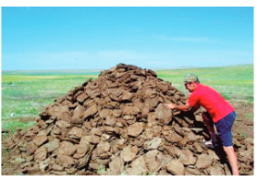
- They enrich the soil with nutrients. Since manure contain nutrients in small quantities, they are needed to be applied in large amounts in the field. They replenish a small part of the plant nutrients utilized by the crops.
- They maintain the humus content of the soil.
- They add large amount of organic matter to the soil, which increases water-holding capacity in sandy soil and drainage in clayey soil.
- Organic manure provide food for soil organisms, which help in making nutrients available to the plants.
- They are biological waste materials, which is advantageous as these protect our environment from harmful effects of excessive use of fertilizers. By using biological waste materials, farm waste is also recycled.
KSEEB SSLC Chapter 6 Notes Detailed Explanation
Types of manure
On the basis of biological waste materials used, manure is classified into farmyard manure (FYM), compost, vermicompost and green manure.
Farmyard manure (FYM)
Farmyard manure (brown manure) is called so since it is prepared by using decomposed mixture of cattle excreta (dung) and urine along with the litter (generally straw) and leftover organic matter such as roughage or fodder. It is prepared by using the above- mentioned waste materials and storing them in a pit for decomposition by microbes till they form dark brown morphous substance, i.e. the manure.
Farmyard manure takes about 4 to 5 months for its formation (i.e. decomposition of waste material). A well-decomposed farmyard manure stimulates plant growth and seed germination. Residue of gobar gas plant is a type of farmyard manure.
Compost
Compost is prepared from farm and town refuse like vegetable waste, livestock excreta (cow dung), animal refuse, sewage waste, eradicated weeds, crop stubble and straw. This organic matter is decomposed by both aerobic and anaerobic microorganisms in pits. This process is called composting. Compost takes about 3 to 6 months for its formation. It is rich in organic matter and nutrients.
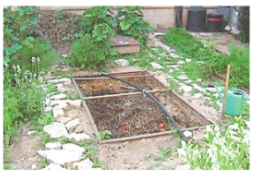
Vermicompost
Compost is also prepared with the help of earthworms. Composting by introducing earthworms in the pit of organic matter is called vermicomposting. In this process, earthworms are introduced to the pit containing plant and animal refuse. Earthworms hasten the process of decomposition of plant and animal refuse.
Green manure
Green manure is prepared from young, fast growing green leguminous crop plants, about two months old, by ploughing them back into the soil. This is a practice of growing green plants prior to sowing of crop seeds and then ploughing of green plants into soil for the purpose of improving physical structure as well as soil fertility. The plants grown for the purpose of green maanuring are sunn hemp (Crotalaria juncea), dhaincha (Sesbania aculeata), guar (Cyamopsis tetragonoloba), berseem and cow pea.
These plants enrich the soil in nitrogen, phosphorus and other organic compounds. Generally, green manure crops like dhaincha and sunn hemp are grown in the fields of crops like rice, maize, sugar cane, cotton and wheat which require high nutrient input.
Limitations of manure
Manure is used extensively by farmers for the growth of crop plants. However, there are some limitations of manure.
- Manure is relatively bulky material. Therefore, it is difficult to store and transport it.
- Manure can supply nutrients only to a limited extent and cannot replenish the massive depletion of nutrients caused by high-yielding varieties of staple crops.
- Manure release the nutrients slowly.
- Manure is not used to treat any specific mineral deficiency as it is not nutrient specific.
Fertilizers
Manure cannot supply all the essential plant nutrients to the soil. Therefore, they are to be supplemented with some chemical fertilizers. Fertilizers are the sources of plant nutrients manufactured commercially from chemicals. Fertilizers make the soil fertile. They are generally inorganic materials or salt containing nitrogen, phosphorus or potassium in the form of soluble chemical compounds.
Advantages of using fertilizers
- Fertilizers are used to ensure high vegetative growth

(leaves, branches and flowers) in order to produce healthy plants.
- They are a factor in the higher yields of high cost farming.
- They are required in small quantity and hence can be easily stored and transported.
- Chemical fertilizers are nutrient specific that provide nitrogen, phosphorus and potassium as per requirement.
Chemical fertilizers, being soluble in water, are readily absorbed by the crops. Thus, chemical fertilizers are different from manure as manure is not soluble in water. The important differences between fertilizers and manure are given in Table 6.4.
Applications of fertilizers
Fertilizers contain much higher amounts of nutrients compared to manure, and therefore, should be used in very small quantities. The fertilizers are to be applied at a specific time of the plant growth cycle. The fertilizers can be applied before sowing, during irrigation, or sprayed on standing crops. High doses of these chemicals do increase crop yield, but these chemicals have many hazards also.
Disadvantages of using fertilizers
Important disadvantages of using chemical fertilizers are as follows:
- These chemicals get washed away due to excessive irrigation and are thus not fully absorbed by the plants. These fertilizers reach rivers, lakes and other waterbodies and pollute them, disturbing the natural ecosystem.
- The continuous use of chemical fertilizers can cause drastic alterations in soil chemistry and affect the crop yield. Fertilizers also harm the soil microorganisms and thus destroy soil fertility as the organic matter in the soil is not replenished.
- The excessive use of nitrogenous fertilizers makes underground water rich in nitrates, which makes the water unfit for drinking,
- The chemical fertilizers, specially nitrogenous, can increase the biological oxygen demand (BOD) of water. This causes harm to aquatic animals like fish and aquatic plants. This phenomenon is known as eutrophication.
Thus, for maintaining soil fertility and optimum yields, short-term benefits of using fertilizers and long- term benefits of using manure should be considered.
Organic Farming
Excessive use of fertilizers affects soil salinity as well as causes water and soil pollution. This is affecting our health. Therefore, nowadays, there is new system of farming which is used to produce food and fibre with minimal or no use of chemicals and with the maximum use of bio-agents and organic manure, known as organic farming.
In organic farming, there is maximum use of organic manure, recycled farm-wastes (such as straw and livestock excreta), and bio-agents (such as blue-green algae) in the preparation of biofertilizers with healthy cropping systems (mixed cropping, intercropping and crop rotation). Neem leaves or turmeric specifically are also used for grain storage as bio-pesticides. Organic farmers do not use synthetic pesticides or fertilizers.
Organic farmers use healthy soils by nourishing the soil with bio-agents that release, transform and transfer nutrients and green manure. Soil organic matter contributes to good soil structure and water- holding capacity. These produce healthy plants that are able to resist disease and insect predation better. In organic farming, healthy cropping systems such as mixed cropping, intercropping and crop rotation are used which effectively disrupt habitat for weeds, insects and disease organisms.
Advantages of organic farming
- Toxin-free food: Organic food is safe to consume. Organic produce contains no or significantly lower levels of pesticide residues (which are already available in soil and water) than conventional produce.
- Controls pests and weeds: The cropping systems are beneficial in insect, pest and weed control besides providing nutrients.
- Environment friendly: Organic farming is environment friendly and does not cause air, water or soil pollution.
- Recycling of waste: It helps in recycling of wastes produced in the farm.
- Maintains fertility of soil: It helps in maintaining the fertility of the soil and soil structure.
Irrigation
Water is one of the most essential requirements for crop production. In India, more than half of our cultivable area does not have irrigation facilities and depends on rainfall for crop production. Thus, agriculture in India is rainfed and the success of crop yields in most areas depends on timely monsoon and sufficient rainfall during growing season.
However, the timing and extent of rainfall being uncertain, we cannot totally depend on rainwater for irrigating the crops. Rainfall may sometimes be excessive and cause floods, while other times, it may be scanty, leading to droughts. The efficiency of existing irrigation systems and the water supplied in fields can be increased with the judicious use.
We can improve the efficiency of irrigation by selecting appropriate crop and cropping system and using required quantity of water at appropriate time.
The process of supplying water to the crops by means of canals, reservoirs, ponds, lakes, wells, tube wells and tanks is known as irrigation.
Benefits of irrigation
- Water supplies two essential elements to the crop plants, namely, hydrogen and oxygen.
- Seeds do not grow in dry soil. Irrigation provides moisture to the soil for the germination of seeds.
- The roots of crop plants cannot grow well in dry soil. Irrigation loosens the soil and supports the growth and elongation of the roots.
- Water at the time of irrigation dissolves the nutrients present in the soil. These nutrients dissolved in water are easily absorbed by the roots of the plants.

Types of irrigation system
The design, equipment and technique of replenishing the soil water by supplying irrigation water is known as irrigation system. Depending upon the kind of water resources available, several irrigation systems are adopted in India to supply water to the agricultural land. These include the wells, canal system, river lift system and tanks.
Wells
This system is based on the availability of ground water. In the well irrigation system, wells are constructed wherever usable groundwater is present. There are two types of wells, namely dug wells and tube wells. Dug wells collect water from water bearing strata and tube wells can draw water from deeper strata. From these wells, the water can be lifted by water pumps, transported through canals and used for irrigation.
The dug wells have their bottom below the groundwater table. The groundwater simply accumulates in the pit. From these pits, the water is lifted by mechanical means, either by using rope and container or bullock operated devices or by pumps. In tube wells, iron pipes are inserted deep in the ground through boring. The water through these pipes is lifted by diesel or electricity operated pumps. These tube wells can continuously supply water depending upon the need.
Improvement In Food Resources Class 9 KSEEB Question Answers
Canal system
Canal system is an extensive and elaborate irrigation system. Big canals are made which receive water from water reservoirs or from rivers. The main canal is further distributed into branch canals and branch canals into field channels or distributaries. These distributaries may serve an individual field or a group of fields depending upon the area.
River lift system
In the river lift system, water is directly drawn from the rivers for irrigation in the areas near rivers. This method is adopted in those areas where canal flow is not sufficient or is irregular due to inadequate release of water from reservoir or river.
Tanks
Small storage reservoirs, which intercept and store the run-off water of smaller catchment areas are known as tanks. This technique is usually followed in the hilly areas having a slope. In this system of irrigation, small dams are constructed below the higher elevation of the catchment areas. From these dams or tanks, the outflow of water is regulated according to the availability of water, which helps in the uniform distribution of water.
River valley system
This system is operated in southern parts of our country, particularly in Karnataka and Kerala where many steep and narrow riverine valleys are found. During rainy season, there is high run-off and discharge flowing in these rivers. However, during rabi season, there is drying up of these riverines. In the valleys and the slopes of these narrow riverines, the crops like coconut, coffee, rubber and tapioca are cultivated.
Rainwater Harvesting And Watershed Management
Two fresh initiatives have been adopted for increasing the water availability for agriculture. These initiatives are:
- Rainwater harvesting
- Watershed management
Rainwater harvesting
In rainwater harvesting, the rainwater that falls on the
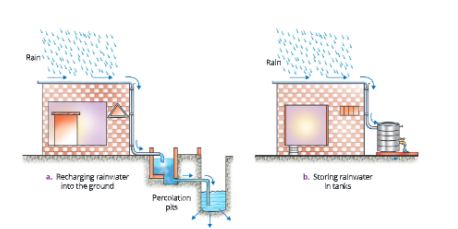
ground or rooftops of buildings is channelled by canals and recharged into the ground by digging tunnels (Fig. 6.9a). This water percolates in the soil. Thus, the water table is maintained to a satisfactory level.
Rainwater can be stored in tanks
This is done by collecting water from cemented surfaces, such as rooftops in tanks or big containers (Fig. 6.9b). This water can be filtered and used in gardens to water plants, in fields for irrigation purposes, at home for cleaning vehicles, floor, clothes, dishes, etc. This water, when strained through a fine cloth, can be used as distilled water in batteries of vehicles.
Watershed management
It involves building of small check dams to increase percolation of water into the ground. It prevents rainwater from flowing away and also reduces soil erosion.
Cropping Patterns
In order to get maximum benefit, crops can be grown in different ways. Some of these ways have been described here.
Mixed cropping
Growing two or more crops simultaneously on the same piece of land is known as mixed cropping. Farmers have been growing two or more crops together on the same piece of land for many centuries. In India, different crops are used in mixed cropping.
Some of the commonly used mixed crops are:
- Soya bean + Pigeon pea
- Sorghum + Pigeon pea
- Groundnut + Sunflower
- Maize + Urad bean
- Cotton + Mung bean
- Wheat + Gram
- Wheat + Mustard
Criteria for the selection of crops in mixed
cropping
The selection of crops for mixed cropping is based on
the following criteria: - Duration of crops: One is short duration crop and the other is long duration crop. This helps in utilizing labour in a proper manner.
- Nature of crops: Food crops are usually mixed with cash crops to ensure both sustenance and income. Cereals and legumes are often mixed for the benefits of nitrogen-fixation by the legumes to the associated cereal crop.
- Root patterns: One crop may be deep-rooted whereas the other crop may be shallow-rooted.
- Growth habits: One crop may be tall growing and the other may be short growing, so that these crops form different canopy.
- Water needs: One crop may need more water and the other may need comparatively less water so that it may be used effectively.
- Nutrient requirements: One crop may require more nutrients whereas the other may require less nutrients. This is done to reduce competition between member crops for water, nutrients and light. If one crop fails due to shortage of moisture or insufficient availability of nutrients, other crops can cover the risk of complete failure.
Advantages of mixed cropping
- No risk of crop failure: Growing two crops of different nature simultaneously reduces the risk of total failure due to uncertain monsoon. This ensures some insurance against failure of the crops.
- Increase in yield: Cereals and legumes are often mixed. Legumes have nodules having Rhizobium as nitrogen fixing bacteria. These bacteria fix up atmospheric nitrogen as nitrates in the soil. These nitrates make the soil rich in nitrogen. It benefits cereals or those crops requiring nitrogen as main nutrient. Thus, yield is increased.
- Minimizes pest damage: Mixed cropping reduces chances of pest infestation on any one of the two crops.
- Improves soil fertility: When a cereal crop (non- leguminous crop) is grown along with a leguminous crop, it helps in maintaining soil fertility. Legumes help in building soil fertility which gets depleted by growing cereal crops.
- Less input of labour: Mixed farming involves greater flexibility of the distribution of labour and recovers the investment in much less time.
Intercropping
Intercropping can be defined as growing two or more crops simultaneously in the same field in a definite row pattern or tier system. In intercropping, the crops selected are those that have different nutrient requirements so that there is maximum utilization of nutrients available in the soil. In intercropping, a few rows of one crop alternate with a few rows of a second crop. For example, we can grow soya bean with maize, or pearl millet (bajra) with cowpea (lobia).
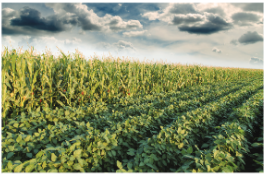
A good example is the multi-tier system of coconut, banana and pineapple or ginger or leguminous fodder or medicinal or aromatic plants. While ensuring biodiversity within a farm, intercropping also allows maximum use of resources.
Advantages of intercropping
Intercropping has several advantages over sole cropping:
- It makes optimum utilization of natural resources such as sunlight, land and water.
- Intercropping also helps to prevent spread of pests and diseases to all the plants belonging to one crop in the field.
- It helps to maintain soil fertility.
- It economises space and time of cultivation of two or more crops.
The comparison between mixed cropping and intercropping is given in Table 6.5.
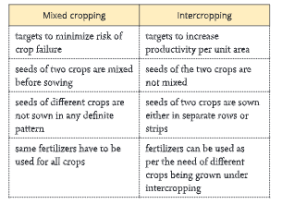

Crop rotation
When the same crop is grown in the same field, year after year, it removes particular nutrients from the soil and reduces its fertility. The fertility of the soil can be restored by crop rotation. Growing different crops on the same piece of land in a pre-planned succession is known as crop rotation.
In the rotation of crops, the legurainous crops like pulses, peas, beans, groundnut and Bengal gram are sown in-between the seasons of cereal crops like wheat, maize and pearl millet (bajra).
Crop rotation restores soil fertility
Cereal plants cannot utilize nitrogen directly from air, whereas leguminous crops possess the ability of fixing nitrogen from air to form nitrogenous compounds in the soil. In the root nodules of leguminous crops, the nitrogen fixing bacteria (Rhizobium) are present which can fix atmospheric nitrogen into nitrates. These are then utilized by plants for the synthesis of proteins.
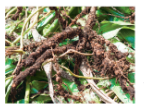
Thus, if a cereal crop is grown in a field, then most of the nitrogen present in the soil is absorbed and the soil becomes deficient in nitrogen. This reduces soil fertility. If the next crop grown is a leguminous crop, then it utilizes atmospheric nitrogen to form nitrogenous compounds in the soil. As a result, the deficiency of nitrogen containing compounds in the soil is removed. Hence, the soil becomes ready for growing the next crop.
Class 9 Biology Chapter 6 Agricultural Improvement Techniques
Selection of crops for rotation
The selection of crops and their varieties is done on the basis of moisture conditions, length of the rainy season or irrigation facility, type of soil and risk involved.
Characteristics of crop rotation
- Legumes are grown in between cereal crops.
- Crops requiring high fertility level are grown after growing legumes.
- High input crops like wheat, rice, maize, sugar cane and potato may be grown before crops requiring low input.
- Generally, crops of the same family should not be grown repeatedly in the same piece of land as this will encourage growth of insects, pests and disease- causing organisms.
Thus, while selecting crops for crop rotation, the
following points should be kept in mind:
→ - Availability of soil moisture through rain or irrigation
- Nutrient status of soil
- Availability of manure, fertilizers, pesticides, irrigation facilities, etc.
- Duration of the crop
Depending upon the duration, crop rotation is
classified as shown in Table 6.6.
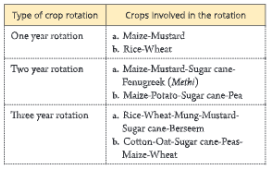
Advantages of crop rotation
- Rotation of crops improves soil fertility. Hence, it brings about an increase in the production of foodgrains.
- It saves a lot of nitrogenous fertilizers. This is because growing a leguminous crop during the rotation fixes atmospheric nitrogen and adds nitrogen to the soil at no cost.
- It helps in weed and pest control. This is because weeds and pests are very choosy about the host crop plant which they attack. When the crop is changed, the weeds and pests associated with that crop usually disappear.
Crop Protection Management
There are a large number of weeds, insect pests and diseases, which attack the food crops and damage them. Out of these, insect pests are one of the most destructive causative agents of field crops, which cause great losses in the agricultural produce. If these weeds, insect pests and diseases are not controlled at appropriate time, then they can damage the crop leading to a loss of more than 50 to 60% of its economic value.
Weed control
You would have seen that when we grow a crop, in addition to crop plants, certain unwanted plants also grow in the field simultaneously. These unwanted wild plants, which grow with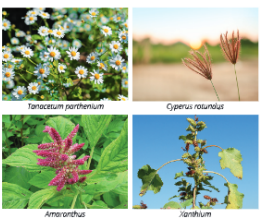
crop plants in the cultivated field are called weeds. Like any other pest, they also adversely affect the crops by suppressing their growth. Weeds are very harmful because of the following reasons:
- Weeds grow in the crop field and compete with the main crop. They consume a lot of soil nutrients, water, fertilizers, sunlight and space, which are meant for the crop plants. This lowers the quality of foodgrain (produce) and crop yield.
- Weeds may sometimes act as an alternate host for microorganisms and different insects, which feed on weeds and attack the crop plants, finally destroying them.
Common weeds
There are many types of weeds. The types of weeds vary from field to field, from crop to crop and also from season to season. Amaranthus (chaulai) is the most common weed, which grows with almost all crops. Xanthium (gokhroo), Parthenium (gajar ghas) and Cyperus rotundus (motha) are some more examples of commonly found weeds in India.
Methods of weed control
Weeds can be controlled by many methods, such as mechanical, cultural, biological and chemical.
Mechanical methods: Weeds are removed manually by uprooting them using hands, harrow (khurpi), hand hoeing, ploughing, land tilling, mowing (cutting with machines) and flooding.
Cultural methods: The cultural methods of weed control involve preparation of proper seed bed, timely sowing of crops, intercropping and crop rotation.
Biological methods: Biological methods of weed control involve the use of insects, which feed selectively on a particular weed. Certain microorganisms that cause diseases in the weed plants and eliminate them are also used in this method. For example, extensive growth of prickly pear weed (Opuntia) is checked through the introduction of Cochineal insect. Similarly, some crop plants like millet, barley and soyabean do not allow the growth of weeds. Such crop plants are known as smoother crops.
Chemical methods: There are certain chemicals that kill weeds. These chemicals are called weedicides. They are also known as herbicides. Some weedicides used to control different weeds are 2,4-D (2,4-Dichlorophenoxy acetic acid), Atrazines, Deltron, etc.
Insect pests
Any organism, which damages or destroys a crop plant is called a pest. Almost all crops are attacked by insect pests. The insect pests lead to low quality of foodgrains and cause a heavy economic loss to the farmer. They affect the health of the crop and reduce yield. Generally, insect pests attack the plants in three ways:
- They cut roots, stem and leaves thereby destroying the crops.
- They suck the cell sap from various parts of the plant.
- They bore into the stem and fruits and eat them from inside.
Control of insect pests
- Insects infesting a food crop and other crop diseases can be controlled by various methods. The use of pesticides is one of the most common and effective methods of controlling insect pests and crop diseases. These pesticides are the chemicals used to control pests like insects, mites, rodents and fungi.
There are following types of pesticides: - Weedicides: Chemicals used to control unwanted wild plants (weeds) in the crop field.
- Insecticides: Chemicals used to kill insects.
- Miticides: Chemicals used to kill mites.
- Rodenticides: Chemicals used to kill rodents
(rats). - Fungicides: Chemicals used to kill fungi.
Chemical methods of controlling insect pests
Those insects that harm the crop by cutting its root are controlled by mixing insecticides in soil. For example, chlorpyriphos is a chemical which is mixed in the soil to control root cutting type of insects.
Those insects that feed on stem and leaf by cutting them and also bore inside the fruits and grains are controlled by spraying insecticides like malathion, parathion and lindane on the crop plants. As the insects come in contact with these insecticides, the insecticides enter their body and kill the insects by affecting their internal metabolism. When an insect feeds on the plant sap, these insecticides enter inside the digestive system of the insect along with the cell sap and result in killing the insect.
However, we should not use pesticides in excess. Excessive use of a pesticide may create problems since they can be poisonous to plants and animals. They also cause environmental pollution.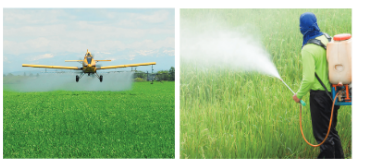
Precautions for using pesticides
While using pesticides, following precautions should be taken:
- Pesticides should be used as per their recommended dose and specific instructions for applying them on crop field. A higher dose can be dangerous for the lives of human beings and other animals.
- The pesticides should be kept safely, well-packed and away from the reach of non-users like children.
- The people applying or spraying the pesticide on the crops should not come in direct contact with the pesticides as these are poisonous to human beings.
KSEEB SSLC Improvement In Food Resources Short Notes Class 9
Crop diseases
mitted through water are called water-borne diseases. For example, blight of rice is a water-borne disease caused by bacteria.
A number of diseases attack crop plants. A plant disease is a structural or physiological abnormality which is injurious to the plant and reduces its economic value. Plant diseases are caused by microorganisms like fungi, bacteria and virus. Depending upon the mode of occurrence and transmission, plant diseases are classified into following three categories.
- Soil-borne diseases: The diseases that get transmitted through the soil are called soil-borne diseases. For example, smut of bajra, tikka of groundnut and wilting of chick pea are some soil- borne diseases caused by fungi.
- Air-borne diseases: The air also transmits many diseases. The diseases which are transmitted through air are called air-borne diseases. For example, rust of wheat is an air-borne disease caused by fungi.
- Water-borne diseases: The diseases which are trans
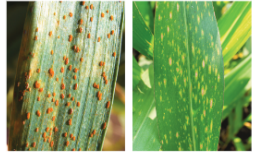
Preventive measures for crop protection
Chemicals (pesticides) are sprayed on crop plants, seeds and soil to kill the desired pests. However, we should try to avoid the use of chemicals as they cause environmental pollution. Instead, we should adopt the preventive measures rather than allowing the crops to be infested by pests and control them by using pesticides. Some of the preventive measures of pests are given below:
- We should use resistant varieties of crops.
- The crops should be sown at their optimum time of sowing.
- We should adopt clean cultivation.
- The fields should be ploughed during summer season to destroy weeds and pests.
- There should be rotation of crops and multiple cropping system.
Storage Of Foodgrains
The foodgrains such as cereals and legumes are preserved for several months and sometimes even for a number of years. Therefore, it is necessary to

keep them in safe storage to ensure their availability during all the seasons. Safe storage facilitates the distribution of food materials to distant places in the country. It also protects the foodgrains and other food materials from pests, rodents and other microorganisms.
Factors affecting stored food material
The various factors responsible for damaging the stored food materials are:
Abiotic factors
- Inappropriate moisture content present in foodgrains and at the place of storage.
- Inappropriate temperature at the place where food material is stored.
- Humidity in the air.
- Properties of material of container in which food material is stored.
Biotic factors
- Insects, microorganisms (fungi, bacteria) and mites.
- Rodents, birds and other animals.
- Enzymatic action within food material.
Methods of foodgrain storage
There are two different methods of food storage:
- Dry storage, and
- cold storage
- Dry storage: The storage of food materials at room temperature is called dry storage. In this method, all the non-perishable materials like foodgrains are stored.
- Cold storage: The storage of food materials at low temperature is called cold storage. The perishable food materials are stored in cold storage. The low temperature of cold storage reduces the losses from spoilage of food materials, and the nutritive value of the food materials is also retained for longer duration.
Preventive measures before foodgrain storage
Following preventive measures must be taken before storage of foodgrains for future use:
Cleaning of the produce before storage Before storage,
the harvested foodgrain should be checked to see if it contains any foreign matter like seeds, earth particles, sand and stone pieces, straw, etc. Any foreign material should be removed from foodgrains before storage.
Drying
Grains have a tendency to absorb moisture from the atmosphere. The moisture content of the grains has to be reduced to a certain level for safe storage of the grains. For drying, the foodgrains or seeds should be spread in thin layer on cemented floor or plastic sheets in the sun. After sun drying, the food materials are dried in the shade to allow them to cool to the room temperature before storing them in the containers, gunny bags or grain-silos.
Maintenance of hygiene in storage houses
Storage houses like godowns, stores, bins, etc. should be properly cleaned before storage of foodgrains in them. All sort of dirt, dust, rubbish, webbing or refuse of previous grain should be swept and removed. If there are any cracks or holes in the wall, floor or ceiling of the storage house, then these should be properly sealed.
Fumigation
Chemicals which can exist in gaseous state in sufficient concentration that can kill pests are known as fumigants. The use of fumigants to kill or repel pests is called fumigation. Before storage, the storage houses should be fumigated or treated with chemical sprays. Gunny bags should be treated with suitable insecticides before storage of foodgrains in them.
Animal Husbandary
In the previous sections, you have studied that agriculture evolved with the increase in population and food requirements to feed the growing population. As the population increased and the living standards also increased, the demand for milk, eggs and meat also increased. This necessitated the improvements in the livestock production.
Rearing animals (livestock) to obtain milk, eggs and meat and their management are called animal husbandry. In other words, the branch of agriculture related to the scientific management of animal livestock is known as animal husbandry. It includes breeding, feeding and disease control of domestic animals.

The various elements of animal husbandry are listed below:
- Proper feeding of animals
- Proper shelter for animals
- Proper care of animals against diseases
- Proper breeding of animals
Importance of animal husbandry
On the basis of utility, animal husbandry is important for the following reasons:
- To increase milk production.
- To increase egg production.
- To increase meat production by rearing high meat-yielding animals.
- To increase production of edible and economically important fish.
- To properly utilize animal waste for economic purposes.
- To produce good quality, high-yielding breeds of domestic animals so that the production of food from animals is increased.
- To properly manage domestic animals and benefit the farmer so that his income from them is increased.
- To increase the quality of food products from animals, thereby increasing the availability of nutritious food.
KSEEB Class 9 Biology Chapter 6 Notes
Nutritional value of animal food
Animal food is generally rich in proteins. For example, milk and milk products are rich in protein content and are highly nutritious. Milk contains all the major food constituents like carbohydrates, proteins, fats, vitamins (A and D), water and minerals such as phosphorus and calcium. The major nutrients obtained from animal products are given in Table .

Cattle Farming
We do cattle husbandry for two purposes:
- For getting milk as a food.
- For agricultural tasks such as tillage, irrigation and carting.
On the basis of the above mentioned criteria, the animals can be divided into the following two categories: - Milk-yielding animals: These animals are also known as milch animals (dairy animals).
- Dranght animals: These animals are used for farm labour.
Indian cattle belong to two different species. - Cows: Bos indicus, and
- Buffaloes: Bos bubalis.
The female cattle provide milk, which in turn contribute animal protein to the diet of people. The production of milk depends upon the duration of lactation period. Lactation period is the period of milk production after the birth of a calf. Thus, the milk production can be increased by increasing the lactation period.
There are many important breeds of cows and buffaloes available in our country, which provide us

good quality milk. The exotic or foreign breeds have long lactation period and provide us with good quantity of milk. The local breeds show excellent resistance to the diseases. We can also cross-breed the exotic breeds and local breeds to get animals with both the desired qualities (long lactation period and resistance to diseases).
Indigenous or local breeds of cattle: Sahiwal, Gir, Red Sindhi and Tharparkar are some of the indigenous breeds of cattle.
Exotic breeds of cattle: The exotic breeds mean those breeds which have been imported from abroad and are reared in India. The exotic breeds of cattle are Holstein-Friesian, Jersey, Brown Swiss, etc.
Improved breeds of cattle: In India, certain improved breeds of Indian cattle have been developed by making a cross between indigenous (local) cows with high milk-yielding with exotic breeds of bull. The improved, high milk-yielding breeds of cows developed in India are:
- Frieswal
- Karan Swiss
- Karan Fries
Food requirements of dairy animals
Unlike human beings, animals cannot prepare their food. If they are domesticated, they must be fed fodder and grain. The animal food must be rich in nutrients for maintaining good health and for production of milk.
The food requirements of dairy animals is of the following two types:
- Maintenance requirements: These include food for normal metabolic activities required to support the animals to live a healthy life.
- Milk producing requirements: These include the food required during the lactation period.
The animal food contains two types of substances: roughage and concentrates. - Roughage are coarse and fibrous straw materials having a low nutrient content such as carbohydrates, fats, minerals, proteins and vitamins. Roughage form the bulk of the cattle feed. The animals get roughage in their feed from hay (straw of cereals) and fodder obtained from berseem, cowpea, husk of gram, wheat, rice, etc.
- The concentrates used in animal feed are mixture of substances, which are rich in protein and other nutrients but low in fibre. Concentrates include grains, seeds and oilseed cakes containing relatively smaller amounts of crude fibre and high amount of proteins and other nutrients. The cattle need a balanced ratio of all nutrients in appropriate amounts.
In addition to roughage and concentrates, certain feed additives are also supplied in the diet of the cattle. The feed additives contain macronutrients and promote the health and milk output of the dairy animals.
Proper cleaning and shelter facilities
We must protect our animals from extreme environmental conditions (like heat, rain and cold). Thus, for rearing animals, we must provide them with proper shelters and clean them regularly.
Domestic animals should be regularly brushed to remove dirt and loose hair. They should be kept in well-lighted shelters with proper ventilation, water supply and hygienic disposal to protect them from rain, heat and cold. The floor of the rearing shelter should have proper slope so that water can drain easily and floor stays dry to facilitate cleaning. This will help in maintaining proper health of the animals and getting a good and clean milk yield.
Characteristics of a good animal shelter
An ideal animal shelter should have the following
characteristics:
- It should be situated at an ideal place with good surroundings.
- It should protect the animals from heat, cold, rain and extreme weather.
- It should be clean, dry and well-ventilated.
- It should get proper sunlight during the day and should be properly aerated.
- It should have proper arrangements and outlets for disposal of wastes including animal excreta.
- It should be spacious enough for each animal to stay comfortably and avoid overcrowding.
Fish Productio
Fish forms an important part of our diet. Fish is a valuable and cheap source of food rich in animal protein. Fish proteins are easily digestible. In addition, fish is useful for us in the following ways:
- Medicinal use: Fish liver oil (Cod liver oil) is an important source of vitamin A and D.
- Industrial use: Body oil of some fish like herrings and sardines are used for the manufacturing of edible oil and margarine. Agricultural use: They are used as organic manure in the field.
- Feed for farm animals: Dried fish are used to provide proteins to farm animals.
- Adhesive: Skins and bones of fish are used to make high quality glues and adhesives.
Fish production includes fin fisheries [capture, management and exploitation of cartilaginous and bony fishes (true fishes)], and shell fisheries (capture, management and exploitation of crabs, prawns and molluscs).

There are two ways of procuring fish:
- From natural resources, called capture fishery.
- By fish farming, called culture fishery. Fish grow either in seawater or freshwater, such as in rivers and ponds. Depending on the nature of the habitat (place where they are found), fishing can be done by both capture and culture methods in marine water and freshwater ecosystems. In addition, fish are also cultured in brackish water.
Thus, fisheries are of following three types: - Marine fisheries: This includes capturing fish of oceans and seas. Pomphret, tuna, sardine and mackerel are some marine fish.
- Freshwater fisheries: This includes capturing and culturing fish in freshwater system such as lakes, ponds, paddy fields, rivers, etc. For example, rohu, catla, Mystus and Gambusia are some varieties of freshwater fish.
- Brackish water fisheries: This includes fishing activities in brackish water (slightly salty water where sea water mixes with fresh water) such as lagoons, estuaries and mangrove swamps, etc. For example, pearl, spot and mullet are some brackish water fish.
Fisheries are places or establishments concerned with capturing, preserving, exploring and utilizing various types of fish, prawns, etc.
Improvement In Food Resources Chapter Summary Class 9
Marine fisheries
Marine fishery resources in India include 7,516 km of coastline and the deep seas beyond it. In India, the main varieties of marine fish are pomphret, mackerel, tuna, sardine and Bombay duck. There are many types of fishing nets, hook lines, etc. which are used from fishing boats for capturing marine fish. Mechanical fishing boats and deep sea trawlers are now used to capture fish. Government
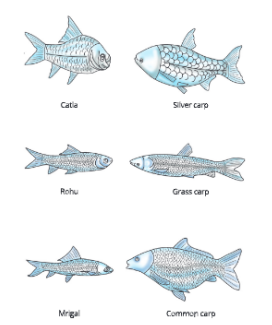
As a result, fish production is increased within the same cost. Both local and imported fish species are used in composite fish culture systems. The fish species selected for composite fish culture have different feeding habits, and as a result, they do not compete for food among themselves. So, all the available food in the pond is effectively utilized. Catla, rohu, mrigal (Indian major carp) and silver carp, grass carp and common carp (exotic breeds of carp from China) are grown together.
Catla is surface feeder, rohu feeds in the middle-zone of the pond, mrigal and common carp are bottom feeders and grass carp feeds on weeds. Thus, together these species can use all the food available in the pond without competing with each other, leading to increase in the fish yield to great extent.
However, composite fish culture has many problems too. A major problem is the lack of availability of good quality seeds. Many of these fish breed only during monsoon. Even if fish seed is collected from the wild, it can be mixed with that of other species as well. Thus, to overcome this problem, these fishes are bred in ponds using hormonal stimulation. This has helped in increasing the supply of pure fish seed in desired quantities.
Activity 1
Request your teacher to organize an educational tour to a fish culture farm. Collect the following data from the fish culture farm.
- Type of culture – monoculture or composite culture.
- Type of pond
- Varieties of fish in the ponds
- Feed ingredients supplied as fish feed in the fish farm
- What is the annual production capacity of the fish farm?
- What are the various diseases encountered by fish farmers?
On the basis of your observations, prepare a project
report and submit it to your teacher.
Poultry Farming
Poultry includes birds such as chicken (hen), duck, geese and turkey. However, it is mostly chicken that is domesticated on a large scale. Poultry farming is defined as the rearing and keeping of poultry birds such as fowl for eggs and meat. Poultry farming is done to raise domestic fowl for the production of eggs and chicken meat. Eggs and meat obtained from birds are a good source of nutrients. Therefore, improved poultry birds are developed and reared in farms to produce layers for eggs and broilers for meat.
The egg-laying poultry birds are called hen (egg layer) while the one groomed for obtaining meat is called chicken or broiler.
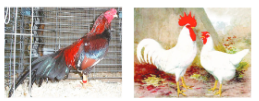
Variety improvement in poultry birds
Indian breeds of poultry birds provide good quality meat but lay small-sized and less number of eggs. Advantages of the desi breeds of poultry birds are that they are strong and have natural immunity against diseases in comparison to exotic breeds. However, exotic breeds are good as they produce more number of eggs and the size of eggs is also bigger than the desi ones.
Some of the indigenous (desi), exotic and upgraded breeds of poultry birds are mentioned here.
Indigenous (desi) breeds of poultry birds
1. Aseel, 2. Basara, 3. Chittagong, 4. Ghagus, s. Brahma, 6. Cochin
Exotic (Foreign) breeds of poultry birds
1. White Leghorn, 2. Rhode Island Red, 3. Black Minorca, 4. Plymouth, 5. Light Sussex
Upgraded breeds of poultry birds
Some improved varieties of poultry birds have been developed by cross-breeding the indigenous (e.g. Aseel) and foreign (e.g. Leghorn) breeds of hen. Some of the improved, high-yielding varieties of poultry birds are B-77, ILS-82 and HH-260.
The cross breeding programme for variety improvement to develop new varieties is focussed on the following:
- To obtain large number and good quality of chicks.
- To obtain dwarf (small) broiler parent for production of chick commercially.
- To obtain varieties which have capacity to adapt in summers and tolerance to high temperature.
- To get varieties which have low maintenance requirements.
- To get the small-sized, egg-laying poultry birds which can easily utilize more fibrous cheaper diets formulated by using agricultural by-products.
Egg and broiler production
Poultry farming involves taking good care of birds for food, shelter and disease control.
In order to obtain good quality chicken for meat, broiler chickens are fed on vitamin-rich food for good growth rate and better feed efficiency. Special care is taken to avoid any mortality and maintain superior quality. Broiler chickens are produced as broilers and then sent to market for meat purposes.
It is necessary to maintain optimum temperature and hygiene in housing and poultry feed. In addition, it is necessary to control diseases and pests infestation. The housing (shelter), feed and environmental requirements of broilers are different from egg layers. The broilers should be provided with feed rich in proteins with adequate fat. The levels of vitamin A and K are kept high in poultry feeds.
Disease control
Since they live in crowded conditions, the poultry birds suffer from a number of diseases. These diseases are caused by bacteria, viruses, fungi, parasites and also from nutritional deficiencies. These diseases can be controlled by taking preventive measures like proper cleaning, sanitation, spraying of disinfectants at regular intervals, proper feed and vaccination. Appropriate vaccination is required to prevent any occurrence of diseases and loss of poultry birds in case of an outbreak.
Activity 2
Enquire about a nearby poultry farm and visit it. Note the types of breeds, food supplement given to poultry birds, and also the housing and lighting facilities provided there. Identify the growers, layers and broilers in them.
Bee-Keeping
Bee-keepingis the practice of rearing and taking care of honey bees on a large scale to obtain honey from them. It is also known as apiculture.
There are many advantages of bee-keeping:
- It provides honey, which is a nutritive food and has many other uses.
- It provides bees-wax, which is used in various medicinal preparations.
- Honey bees are excellent pollinating agents. Thus, they help in getting good agricultural yields.
Thus, bee-keeping for making honey and other related benefits has become an agricultural enterprise. Since bee-keeping needs low investments, farmers use it as an additional way of income generation. Bee-farms or apiaries are established for commercial honey production.
Varieties of honey bees
There are four common varieties of honey bees. Out of these, three are local varieties while one is an exotic variety.

Indigenous (local) varieties
The indigenous (local) varieties of honey bees used for commercial honey production are:
- Apis cerana indica- commonly known as the Indian bee.
- Apis dorsata-commonly known as the rock bee.
- Apis florea – commonly known as the little bee.
Exotic variety reared in India
- Apis mellifera (the Italian bee): This variety has been brought in India to increase yield of honey.
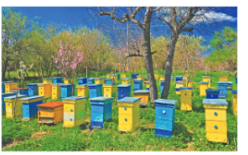
It can be easily domesticated and is commonly used for commercial honey production. This variety of bee has high capacity of honey collection. It also stings lesser than other varieties. It stays in a beehive for a long period and breeds very well.
Quality and taste of honey
The quality or value of honey depends upon pasturage or flowers available to the honey bees for nectar and pollen collection. + The taste of honey depends upon the quantity of pasturage and kind of flowers available.
Summary
- Cultivation of food crops in field for food requirements is known as agriculture.
- There are about 30 to 40 elements found in plants. Out of these, only 16 nutrients are essential for plant nutrition.
- The nutrients required by plants in large quantities are known as macronutrients whereas nutrients needed in small amounts are known as micronutrients.
- Soil provides nitrogen, phosphorus, potassium, manganese, magnesium, boron, iron, sulphur, copper, calcium and molybdenum to plants.
- Manure is an organic substance obtained from the decomposition of vegetable and animal waste, which supply essential elements and humus to the soil and make it fertile.
- There are three types of manure namely, farmyard manure (FYM), compost and green manure.
- Fertilizers are the plant nutrients manufactured commercially from chemicals.
- Fertilizers can be applied before sowing, during irrigation or spraying on the standing crops.
- A farming system with no or minimal use of chemicals and with maximum use of organic manures, etc. with healthy cropping system is known as organic farming.
- The various systems of irrigation used in India are: canal system, tanks, wells, river valley system and river lift system.
- Mixed cropping is growing two or more crops simultaneously on the same plece of land.
- Intercropping is growing two or more crops simultaneously on the same piece of land in a definite row pattern.
- Growing different crops on the same plece of land in a pre-planned succession is known as crop rotation. Crop rotation restores soil fertility.
- Improvement in variety simply means to develop varieties with desired characters such as higher yields, better qualities and resistance to different stresses, both biotic and abiotic.
- Weeds, insect pests and diseases can cause 50 to 70% damage to the crop. Insects, pests and weeds can be controlled by using pesticides and weedicides.
- The diseases of crop plants can be classified into soil-borne diseases, air-borne diseases and water-borne diseases.
- There are many pests of stored grains which damage stored food products. The stored grain pests can be controlled by chemicals, fumigation and plant products.
- We should use airtight, moisture impervious, thermally Insulated and rodent proof structures for safe storage of grains.
- The branch of agriculture related with scientific management of animal livestock is known as animal husbandry.
- Animal husbandry helps in producing good quality, high-yielding breeds of domestic animals.
- Fish production includes capture, management and exploitation of fin and shell fisheries.
- Poultry farming is rearing and keeping of poultry birds for eggs and meat.
- ee-keeping is the practice of rearing and taking care of honey bees on a large scale to obtain honey from them.
Key Terms
- Agriculture: The cultivation of food crops in the field for food requirements
- Sustainable agriculture: Successful management of resources for agriculture to satisfy the changing human
needs, while maintaining or enhancing the quality of environment and conserving natural resources - Food crops: Crops that we eat to obtain nutrients
- Fodder crops: Crops that are raised as food for the livestock
- Rabi crops: The crops that are raised in the winter season i.e. from November to April
- Kharif crops: The crops that are raised in the rainy season i.e. from June to October
- Plant breeding: The science of improving genetic make-up of plants in relation to their economic use
- Hybridization: Process of crossing two genetically dissimilar plants to obtain a progeny with the desired traits
- Intervarietal: Crossing between different varieties
- Interspecific: Crossing between different species of the same genus
- Intergeneric: Crossing between different genera
- Macronutrients: Those elements which are utilized by plants in relatively large quantities
- Micronutrients: Those elements which are required by plants in small quantities
- Weedicides: The chemicals which are used to kill weeds
- Pest: Any organism which damages or destroys a crop plant
- Dry storage: The storage of food material at room temperature
- Cold storage: The storage of food materials at low temperature
- Fumigation: The use of fumigants to kill or repel pests
- Milch animals: Milk-yielding animals
- Draught animals: The animals that are used for farm labour
- Lactation period: The period of milk production after the birth of a calf
- Mariculture: Culture of marine fishes
- Aquaculture: Rearing and management of aquatic animals
- Apiculture: The practice of rearing and taking care of honey bees on a large scale to obtain honey from them
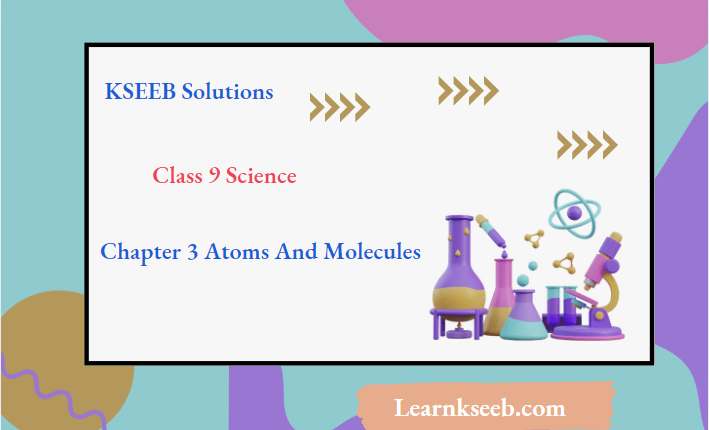
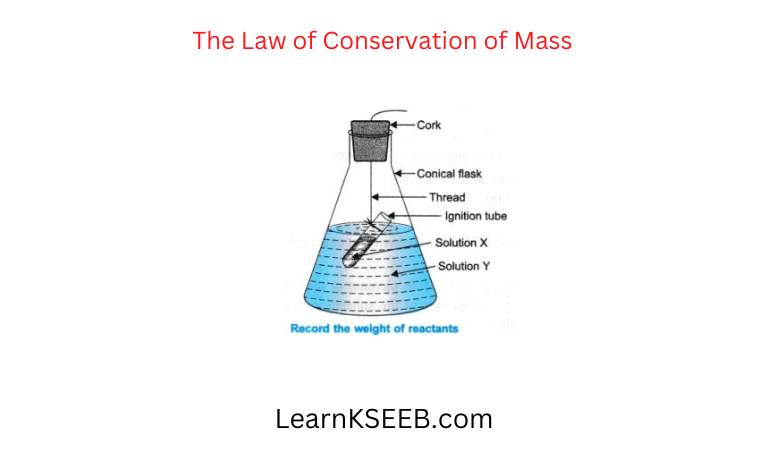

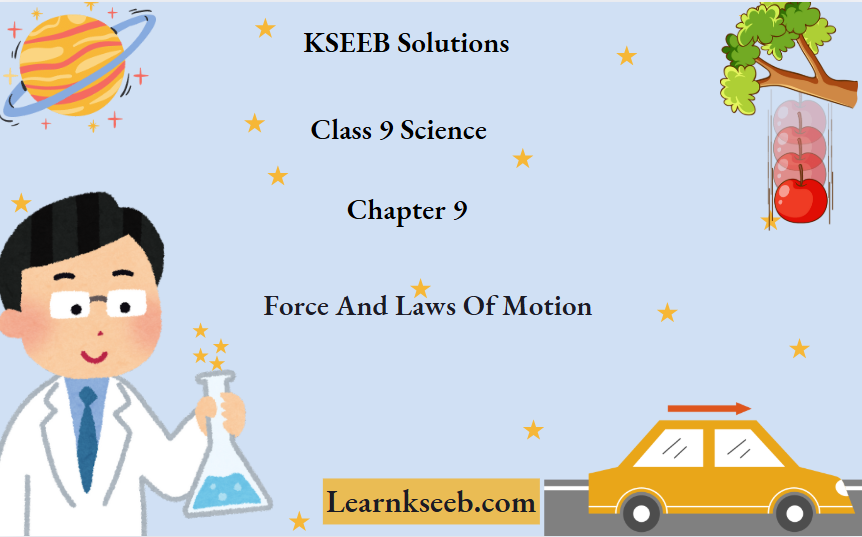
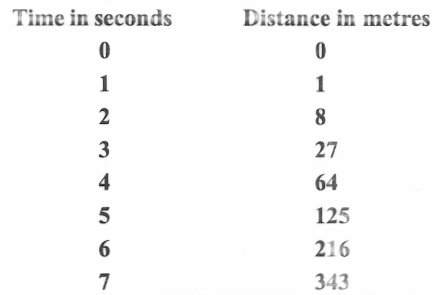

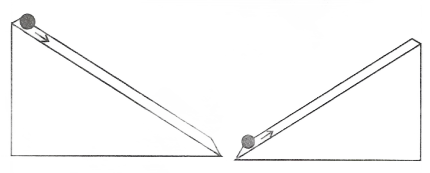

 Answer:
Answer: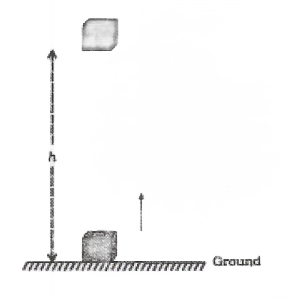
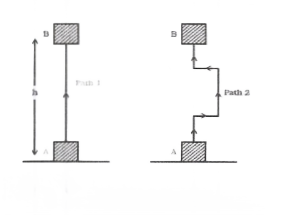 Case (1):
Case (1):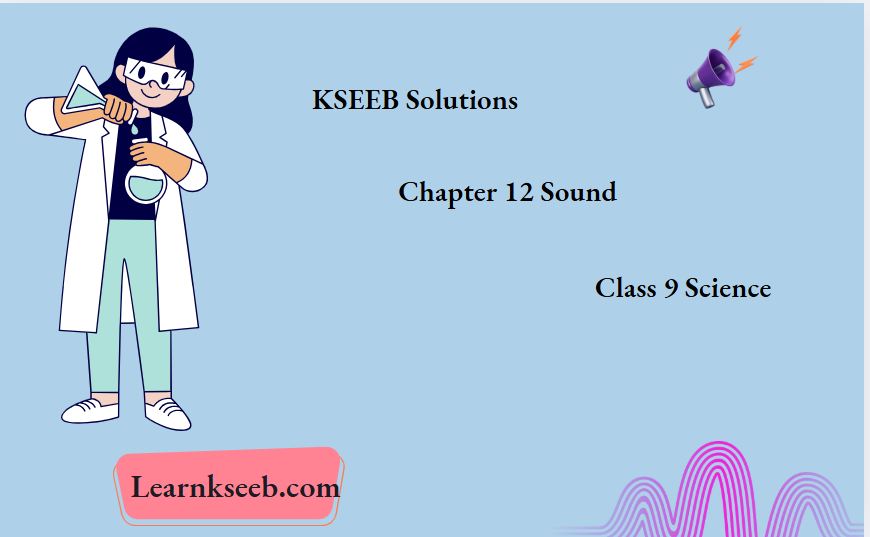
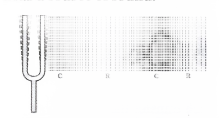

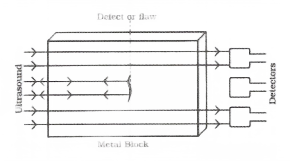


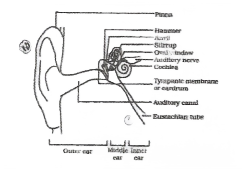
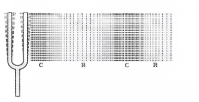
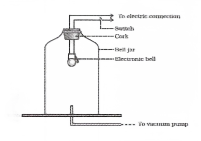
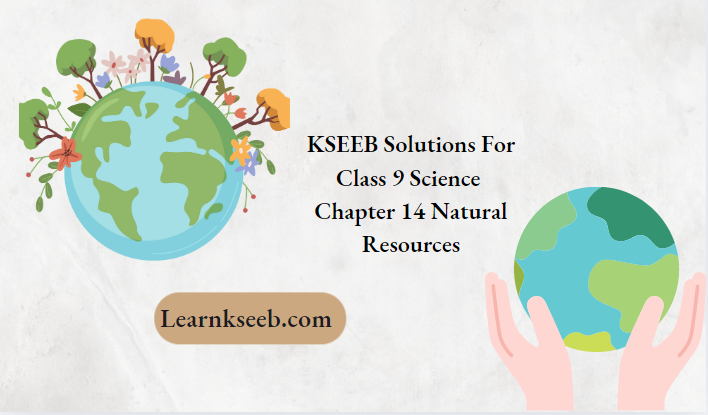
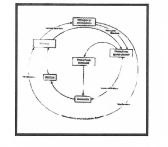
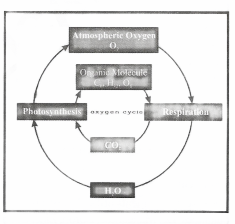
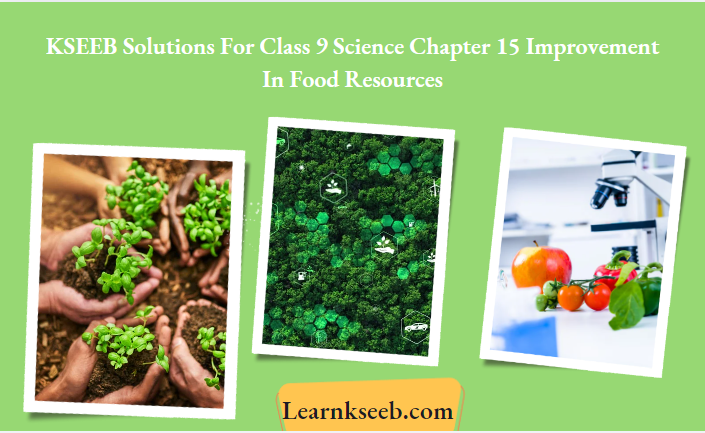
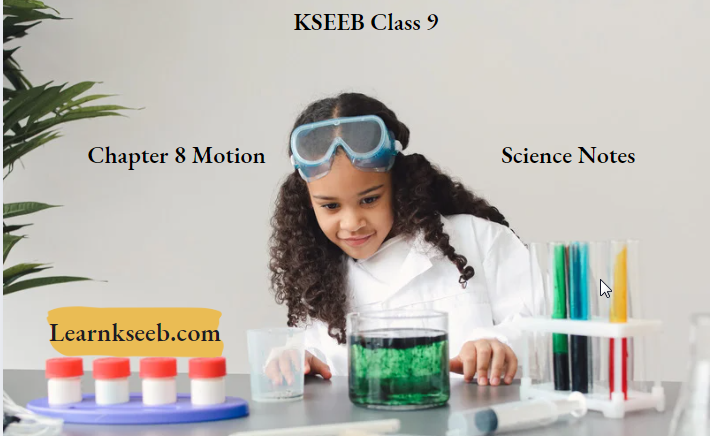
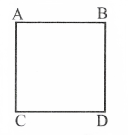 Answer: Consider the square field ABCD as shown in the figure. Given that fanner covers the boundary ABCD in 40 s. If he walks for 2 minutes and 20 seconds, he will be at point C.
Answer: Consider the square field ABCD as shown in the figure. Given that fanner covers the boundary ABCD in 40 s. If he walks for 2 minutes and 20 seconds, he will be at point C.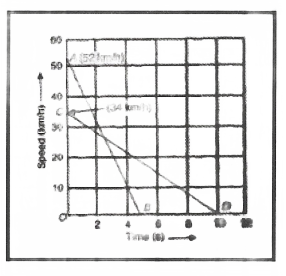
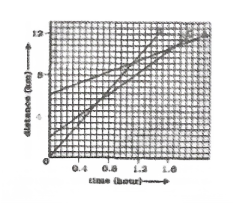 (1) Which of the three is travelling the fastest?
(1) Which of the three is travelling the fastest?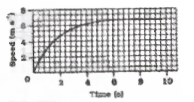
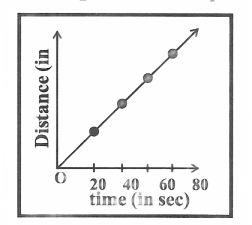
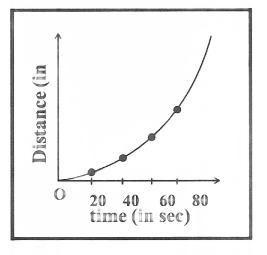
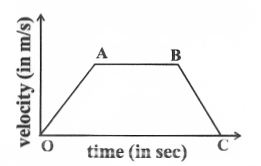
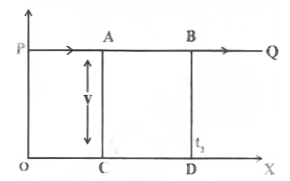
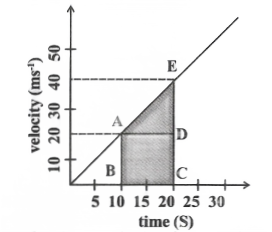
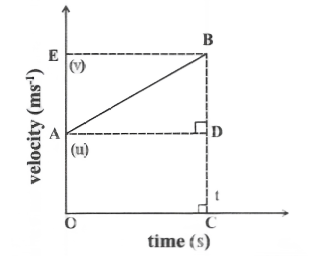

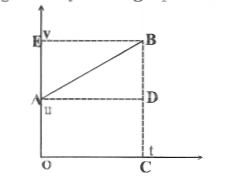
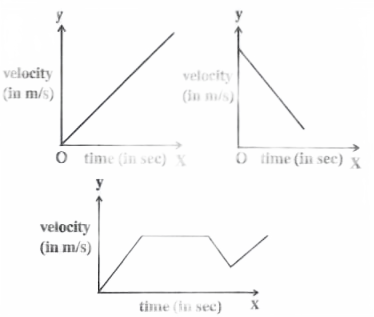
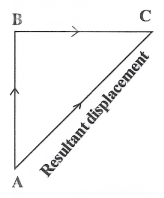
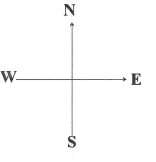
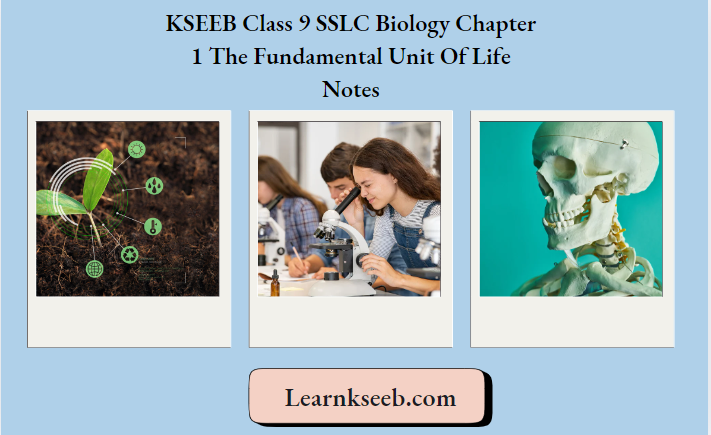
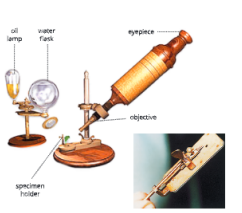
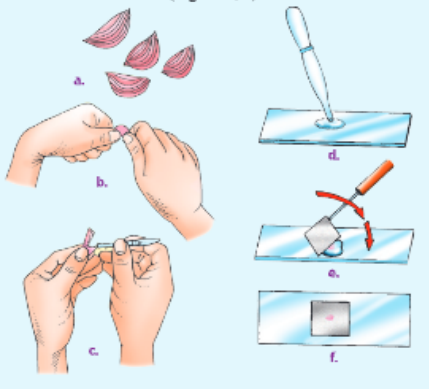
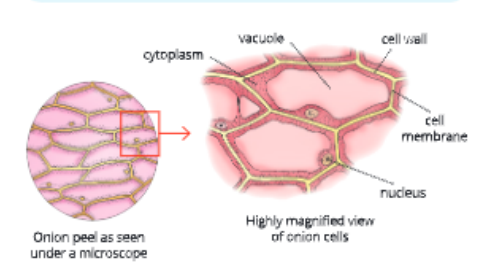
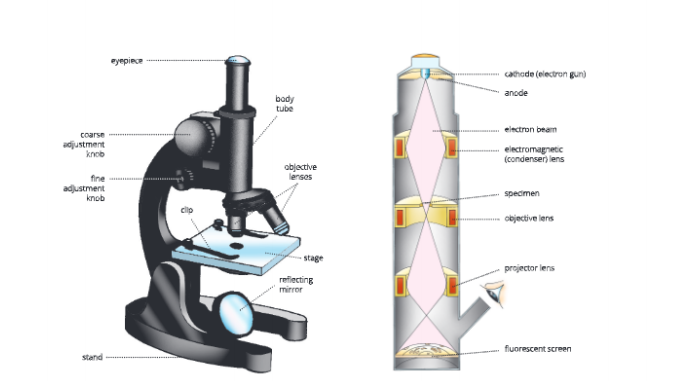
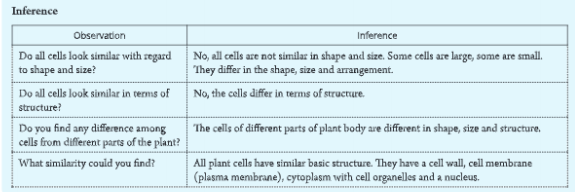
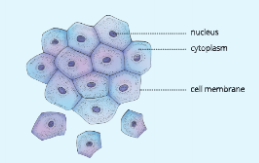
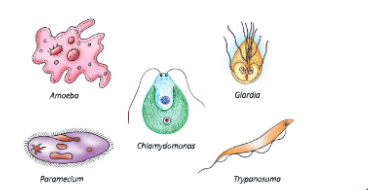

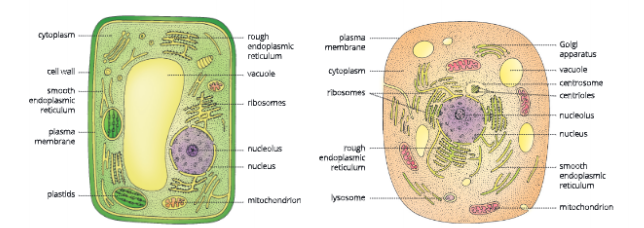

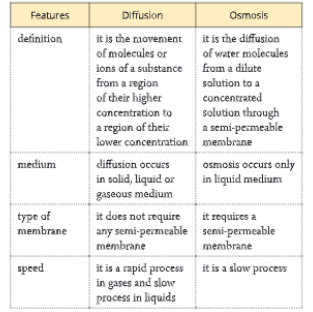

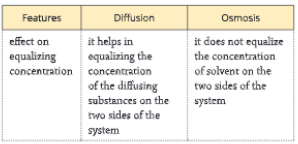

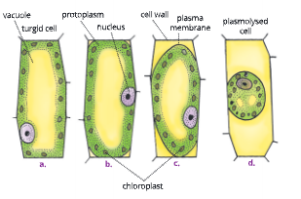
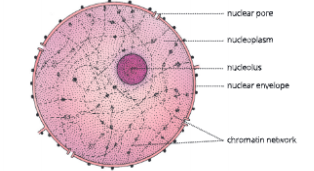


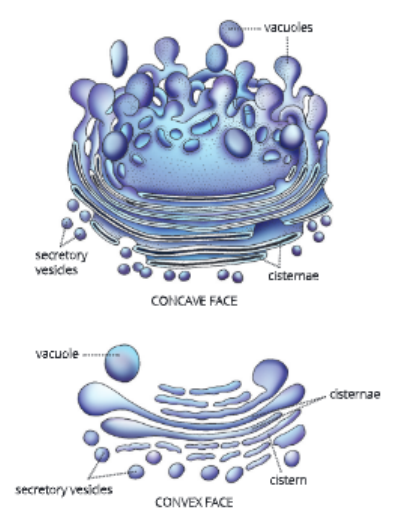
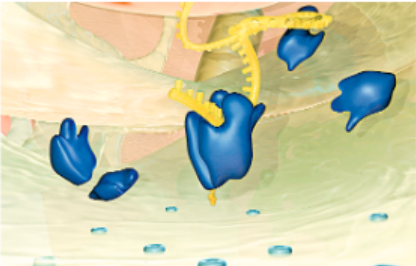
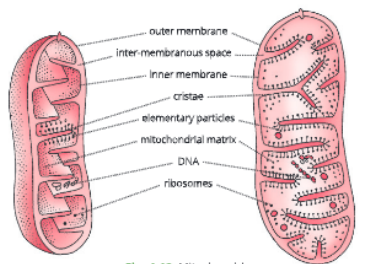 They Provide Important Intermediates For The Synthesis Of Several Biochemical Substances Like Chlorophyll, Cytochromes And Steroids.
They Provide Important Intermediates For The Synthesis Of Several Biochemical Substances Like Chlorophyll, Cytochromes And Steroids.